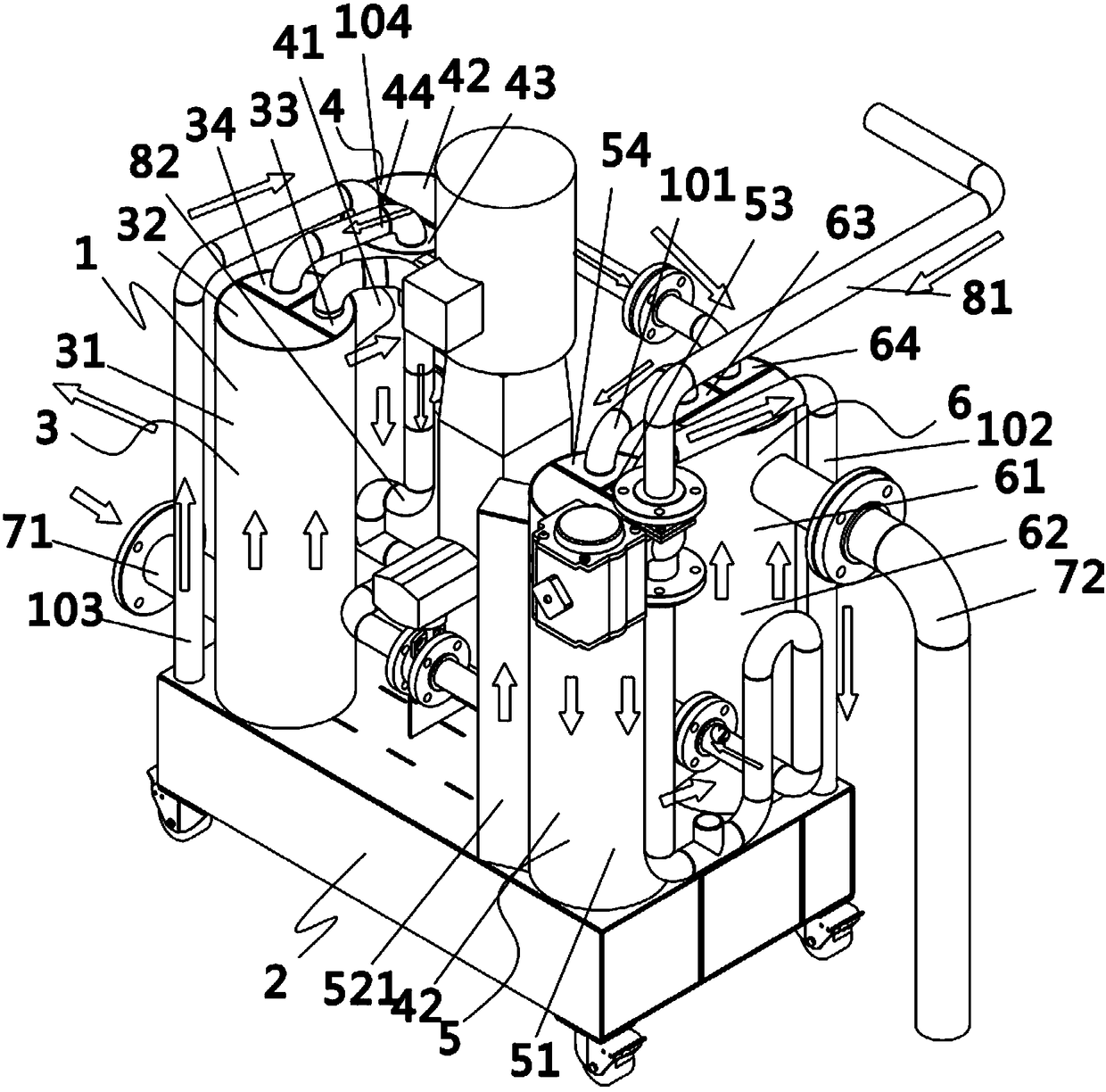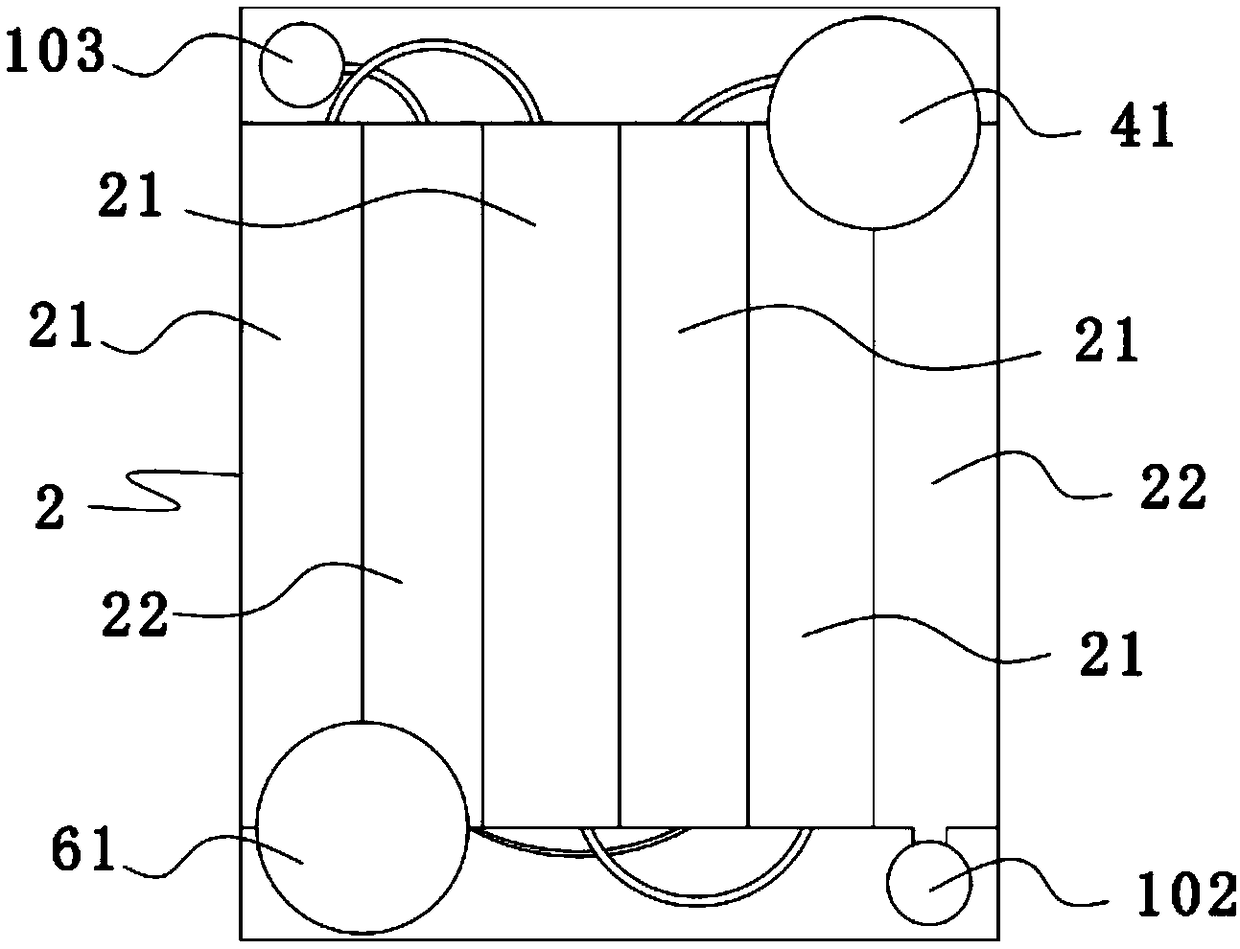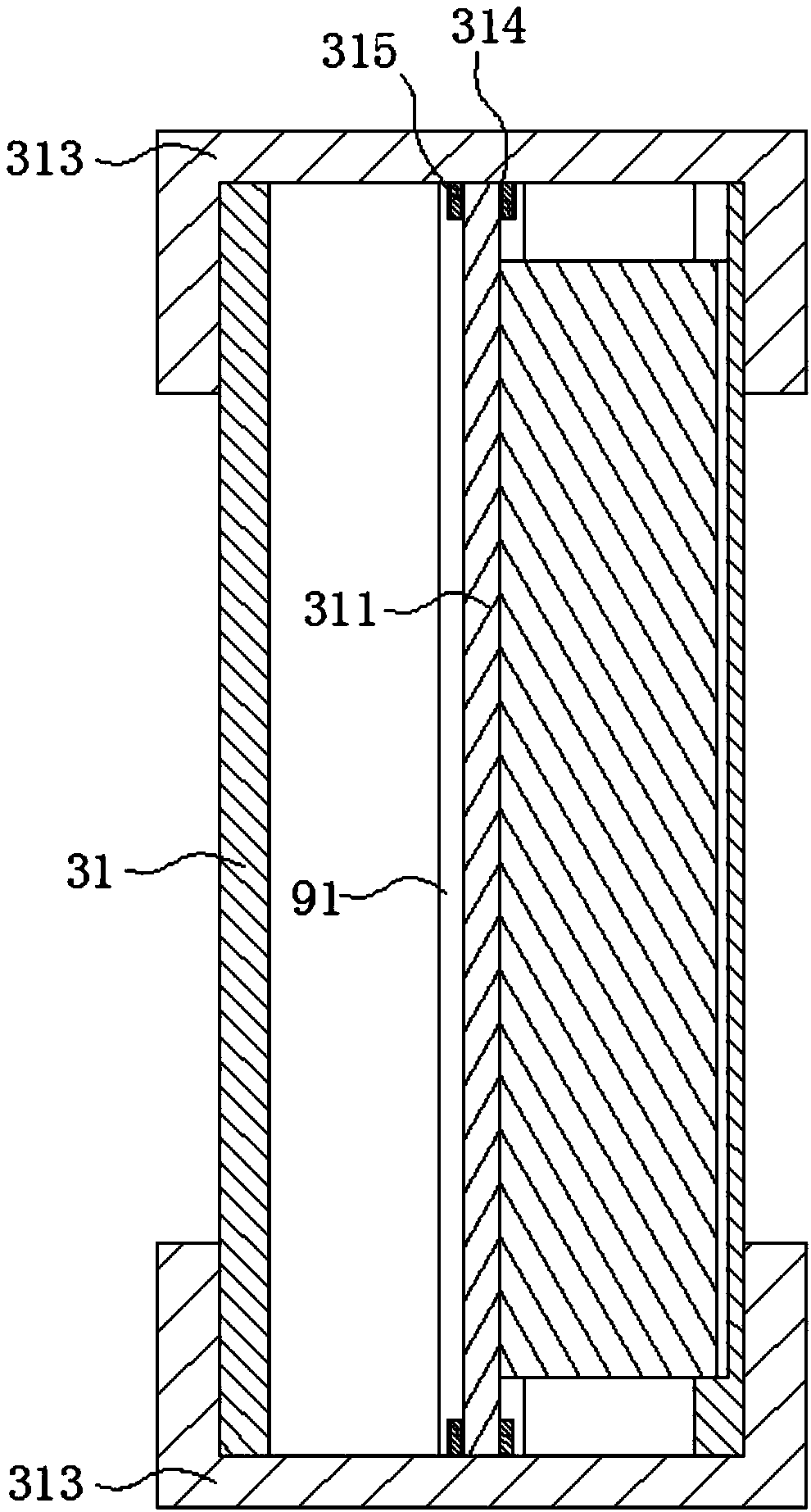Printing and dyeing wastewater treatment method
A technology for printing and dyeing wastewater and treatment methods, which is applied in textile industry wastewater treatment, water/sewage treatment, neutralized water/sewage treatment, etc., and can solve the problems of high raw material input costs, difficulty in meeting discharge standards for printing and dyeing water, toxic substances and chromaticity Eliminate problems such as poor effect, achieve the effect of less investment, energy saving and consumption reduction, and improved effect
- Summary
- Abstract
- Description
- Claims
- Application Information
AI Technical Summary
Problems solved by technology
Method used
Image
Examples
Embodiment 1
[0025] A printing and dyeing wastewater treatment method includes the following steps: (1) After the printing and dyeing wastewater undergoes heat exchange and heat treatment through a heat exchange device, it is passed into a regulating tank; the temperature of the printing and dyeing wastewater after heat exchange is 30°C; and then into the regulating tank Add acid-base regulator to adjust pH to 8.5 and COD to 300mg / L; specifically, acid-base regulator includes the following components by weight: 25 parts of citric acid, 2 parts of sodium hydroxide, and 1 of hydrochloric acid solution; (2) The waste water is passed into the reaction tank, and alkaline resin is added to the reaction tank. The reaction tank is a concrete tank, and the waste water is discharged after stirring and reacting for 1 hour; specifically, the alkaline resin is a strong alkaline anion exchange resin, after the reaction treatment The COD of the discharged wastewater is less than 50 mg / L, specifically 40 mg...
Embodiment 2
[0040] A printing and dyeing wastewater treatment method, including the following steps: (1) After the printing and dyeing wastewater is heat-exchanged through a heat exchange device, it is passed into a regulating tank; the temperature of the printing and dyeing wastewater after heat exchange is 35°C; and then to the regulating tank Add acid-base regulator to adjust pH to 9.5 and COD to 500mg / L; specifically, acid-base regulator includes the following components in parts by weight: 33 parts of citric acid, 4 parts of sodium hydroxide, 3 parts of hydrochloric acid solution; (2) The waste water is introduced into the reaction tank, and alkaline resin is added to the reaction tank. The reaction tank is a concrete tank, and the waste water is discharged after stirring and reacting for 2 hours; specifically, the alkaline resin is a strong alkaline anion exchange resin, after the reaction treatment The COD of the discharged wastewater is less than 50 mg / L; (3) Add phosphate substance...
Embodiment 3
[0042] A printing and dyeing wastewater treatment method includes the following steps: (1) After the printing and dyeing wastewater undergoes heat exchange and heat treatment through a heat exchange device, it is passed into a regulating tank; the temperature of the printing and dyeing wastewater after heat exchange is 30°C; and then into the regulating tank Add acid-base regulator to adjust pH to 8.5 and COD to 300mg / L; specifically, acid-base regulator includes the following components in parts by weight: 25 parts of citric acid, 4 parts of sodium hydroxide, and 1 of hydrochloric acid solution; (2) The waste water is introduced into the reaction tank, and alkaline resin is added to the reaction tank. The reaction tank is a concrete tank, and the waste water is discharged after the stirring reaction for 1.5 hours; specifically, the alkaline resin is a strong alkaline anion exchange resin, which has undergone reaction treatment The COD of the wastewater discharged afterwards is ...
PUM
 Login to View More
Login to View More Abstract
Description
Claims
Application Information
 Login to View More
Login to View More - R&D
- Intellectual Property
- Life Sciences
- Materials
- Tech Scout
- Unparalleled Data Quality
- Higher Quality Content
- 60% Fewer Hallucinations
Browse by: Latest US Patents, China's latest patents, Technical Efficacy Thesaurus, Application Domain, Technology Topic, Popular Technical Reports.
© 2025 PatSnap. All rights reserved.Legal|Privacy policy|Modern Slavery Act Transparency Statement|Sitemap|About US| Contact US: help@patsnap.com



